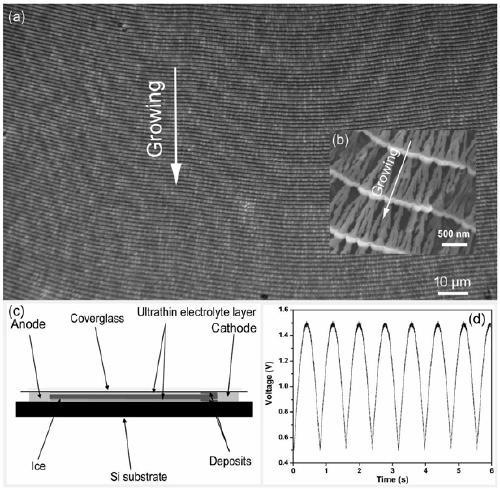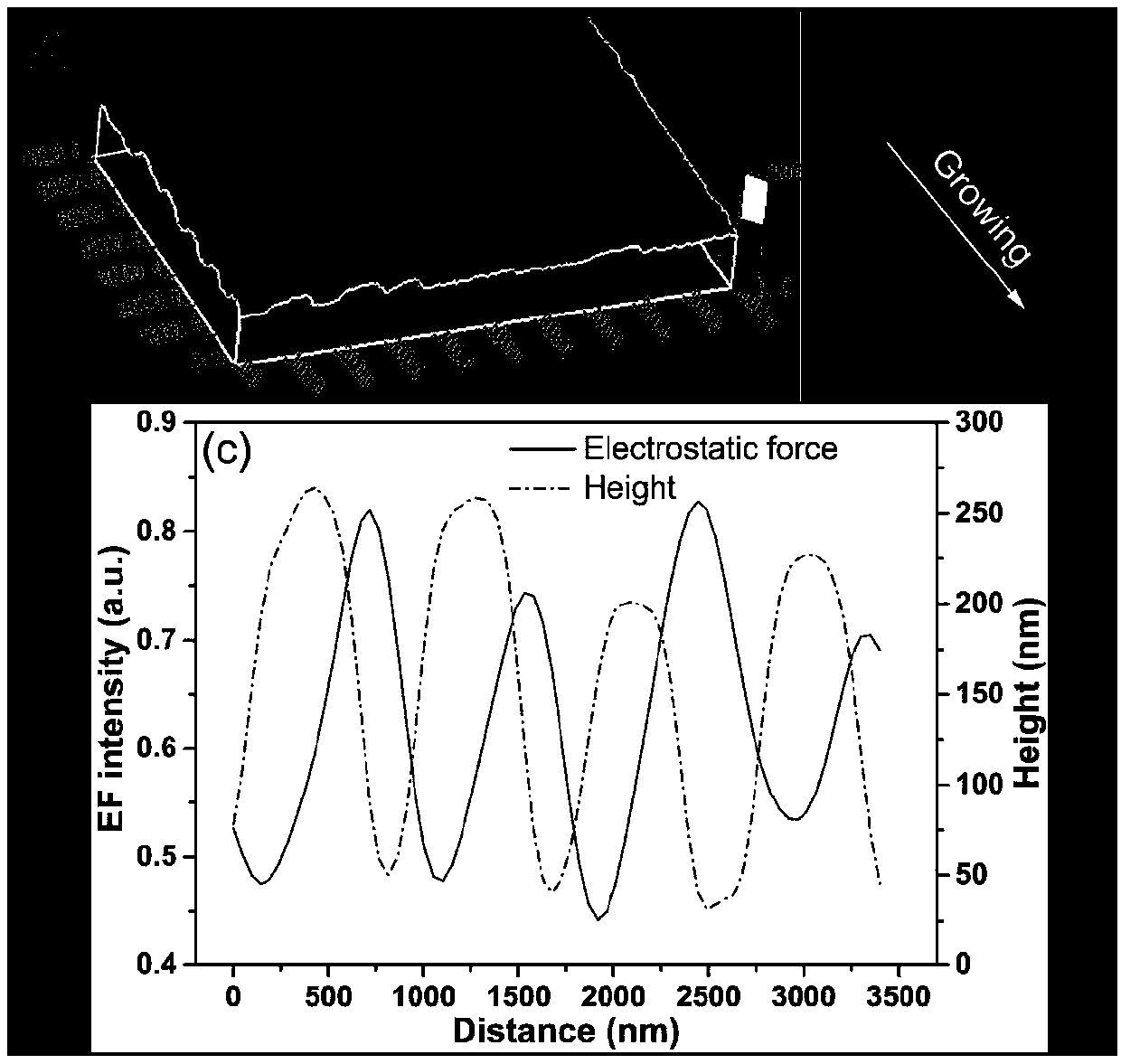A kind of low temperature hydrogen sulfide gas sensitive material and preparation method
A technology of low-temperature vulcanization and hydrogen, which is applied in the field of electrochemistry, can solve the problems that are difficult to realize, and achieve the effects of repeated use, optimization of conductance change, and overcoming adverse effects
- Summary
- Abstract
- Description
- Claims
- Application Information
AI Technical Summary
Problems solved by technology
Method used
Image
Examples
Embodiment 1
[0034] The low-temperature hydrogen sulfide gas sensitive material is composed of continuously distributed Cu 2 O and periodically spaced Co 3 o 4 constituted and is based on Cu 2 O and Cu 2 O-Co 3 o 4 Lateral Periodic Heterostructure Ordered Array Materials of Composite Materials.
[0035] Its preparation method comprises the following steps:
[0036] (1) Using 50mL deionized water and 0.7248g Cu(NO 3 ) 2 and 0.4365g Co(NO 3 ) 2 The electrolyte raw material is used to configure the electrolyte, and the electrolyte uses HNO 3 Adjust the pH to 4;
[0037] (2) In the temperature-controlled growth chamber, two 2 mm wide and 3 cm long copper foil electrodes (30 μm thick) are placed parallel to each other at a distance of 6 mm with a surface oxidized silicon wafer or glass wafer as the substrate. On the substrate, drop 20 μL of electrolyte solution between the two electrodes, cover with a cover glass, and control the temperature at -4.5 °C;
[0038] (3) Then use the co...
Embodiment 2
[0048] The low-temperature hydrogen sulfide gas sensitive material is composed of continuously distributed Cu 2 O and periodically spaced Co 3 o 4 constituted and is based on Cu 2 O and Cu 2 O-Co 3 o 4 Lateral Periodic Heterostructure Ordered Array Materials of Composite Materials.
[0049] Its preparation method comprises the following steps:
[0050] (1) Using 20mL deionized water and 0.2899g Cu(NO 3 ) 2 and 0.1746g Co(NO 3 ) 2 The electrolyte raw material is used to configure the electrolyte, and the electrolyte uses HNO 3 Adjust the pH to 3.5;
[0051] (2) In the temperature-controlled growth chamber, two 2 mm wide and 3 cm long copper foil electrodes (30 μm thick) are placed parallel to each other at a distance of 6 mm with a surface oxidized silicon wafer or glass wafer as the substrate. On the substrate, drop 20 μL of electrolyte solution between the two electrodes, cover with a cover glass, and control the temperature at -4.5 °C;
[0052] (3) Then use the ...
Embodiment 3
[0056] The low-temperature hydrogen sulfide gas sensitive material is composed of continuously distributed Cu 2 O and periodically spaced Co 3 o 4 constituted and is based on Cu 2 O and Cu 2 O-Co 3 o 4 Lateral Periodic Heterostructure Ordered Array Materials of Composite Materials.
[0057] Its preparation method comprises the following steps:
[0058] (1) Using 40mL deionized water and 0.5798g Cu(NO 3 ) 2 and 0.3492g Co(NO 3 ) 2 The electrolyte raw material is used to configure the electrolyte, and the electrolyte uses HNO 3 Adjust the pH to 4.5;
[0059] (2) In the temperature-controlled growth chamber, two 2 mm wide and 3 cm long copper foil electrodes (30 μm thick) are placed parallel to each other at a distance of 6 mm with a surface oxidized silicon wafer or glass wafer as the substrate. On the substrate, drop 20 μL of electrolyte solution between the two electrodes, cover with a cover glass, and control the temperature at -4.5 °C;
[0060] (3) Then use the ...
PUM
 Login to View More
Login to View More Abstract
Description
Claims
Application Information
 Login to View More
Login to View More - R&D
- Intellectual Property
- Life Sciences
- Materials
- Tech Scout
- Unparalleled Data Quality
- Higher Quality Content
- 60% Fewer Hallucinations
Browse by: Latest US Patents, China's latest patents, Technical Efficacy Thesaurus, Application Domain, Technology Topic, Popular Technical Reports.
© 2025 PatSnap. All rights reserved.Legal|Privacy policy|Modern Slavery Act Transparency Statement|Sitemap|About US| Contact US: help@patsnap.com



